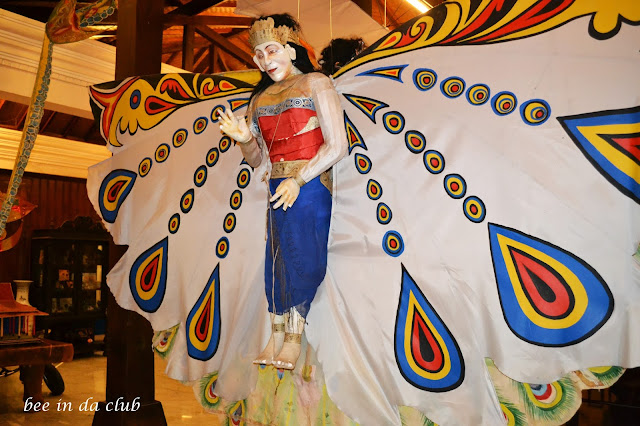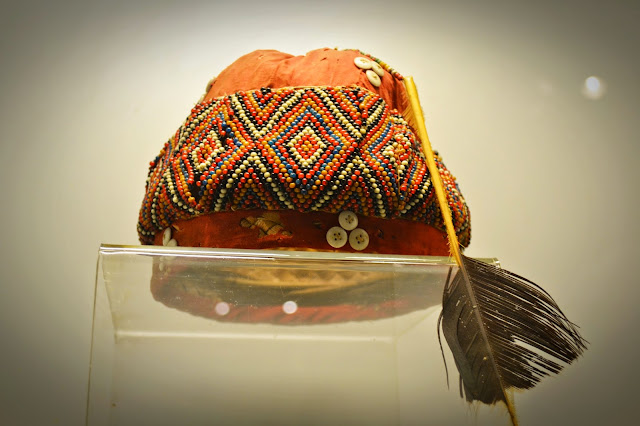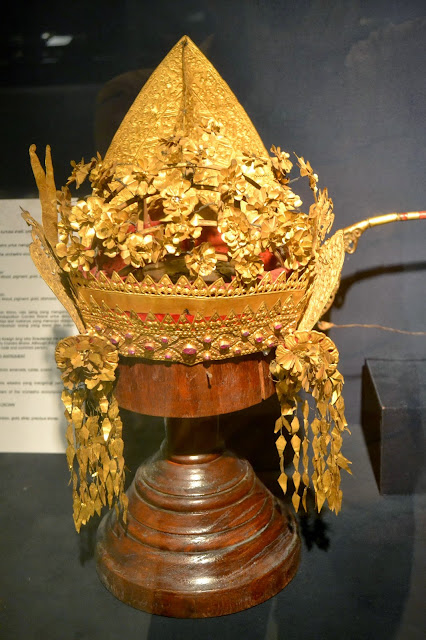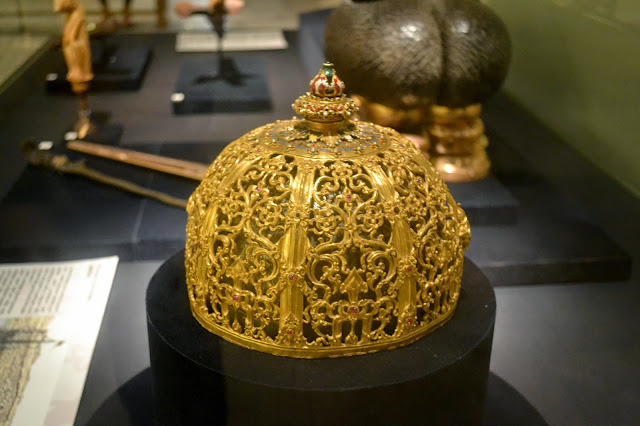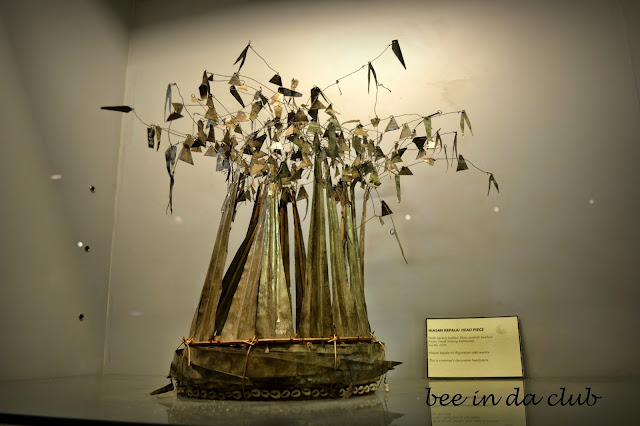8 months pregnancy
Senin, 28 September 2015
Selasa, 01 September 2015
Payung Juwiring
Selain lurik, ternyata Klaten menyimpan benda khas lain yang hampir terancam punah. Ya..patung cantik yang mudah terlupakan seiring dengan perubahan zaman. Berikut kliping dari harian Kompas hari minggu tanggal 27 September 2015
Kamis, 07 Mei 2015
Indonesian Traditional Headpiece at National Museum
Assalamualaikum, halo sobat.... :)
Lama tak jumpa nih. Maklum, malas banget pemiliknya mengupdate postingan. Biar ini blog gak berdebu dan ditumbuhi sarang laba-laba, disempetin sejenak deh aplod foto-foto hasil jepretan di museum gajah yang udah lama nian terpendam di hard disk.
Foto-foto ini diambil di Museum Nasional atau lebih dikenal dengan museum gajah jakarta pada bulan September 2013, beberapa hari sebelum terjadi pencurian 4 artefak emas di ruangan Khazanah Arkeolog Emas. Sayang banget ya dengan beribu koleksi yang tak ternilai harganya, tingkat pengamanan masih sangat minim. Waktu itu jalan depan museum masih boleh dilewatin motor sih, jadi masih nyaman kesananya.
Dari ribuan koleksi museum, sepertinya menarik kalo untuk postingan ini kita fokus mengamati salah satu bagian pakaian tradisional kita yaitu berbagai topi atau hiasan kepala tradisional Indonesia. Kaya banget ya negara kita? unik dan menarik lagi. Kalo kita sendiri tidak tahu nama dan jenis serta asal berbagai macam benda kebudayaan nusantara, jangan salahkan bangsa lain dong bila suatu saat direbut dan diakui sebagai kebudayaan mereka.
Menurut saya salah satu cara mengenalkan berbagai barang koleksi museum kepada anak muda kekinian bisa melalui media sosial internet. Contohnya adalah The Metropolitan Museum of Art yang mempunyai akun instagram @metmuseum dan dikelola khusus oleh social media manager.
Yuk mulai mengenal dan mencintai budaya sendiri
Semoga berguna dan menambah pengetahuan,
see you next post :)
1. Mahkota/ crown
gold / diamond
Kutai, kalimantan Timur / East Kalimantan/ Borneo
this crown or Ketopong of Sultan Kartanegara of Kutai is made of almost two kg of gold. The shape of the crown is known as brunjungan and is distinguished by a seven tiered pagoda (meru) at the front. The crown first used during the reign of Sultan Muhammad Sulaiman (1845-1899) as a symbol of kingship, the crown played an important roles in various royal ceremonies
2. Mahkota Sultan Siak Sri Indrapura
Riau
Penampakan asli Mahkota Sultan Siak Sri
Indrapura dibuat dari emas bertahtakan berlian dan rubi dengan diameter
33 cm, tinggi 27 cm, dan berat mencapai 1.803,3 g. Mahkota ini dihiasi
oleh tiga bunga teratai bertaburkan batu merah delima dan intan.
Selain itu juga dihiasi dengan filigran
motif sulur-sulur benang emas dan bunga. Daun-daun emas kecil dikaitkan
dengan cincin menggantung di keempat lengkungan mahkota.
Kemudian, pada bagian kening terdapat
inskripsi Arab yang berarti “mahkota emas”, yang terbuat dari kawat emas
tipis. Mahkota emas tersebut saat ini dalam keadaan baik serta terawat
dan menjadi koleksi Museum Nasional dengan nomor inventaris E 26.
3. Topi/ hat
daun pandan, rotan, plastik, katun, daun palem/ pandanus leaf, rattan, cotton, plastic, palm leaf
Bajo, Luwuk, Sulawesi Selatan / South Sulawesi
a hat worn by woman at traditional ceremonies
4. Topi/ hat
daun pandan, rotan, plastik, katun, daun palem/ pandanus leaf, rattan, cotton, plastic, palm leaf
Bajo, Luwuk, Sulawesi Selatan / South Sulawesi
a hat worn by man at traditional ceremonies
5. Peci/hat
Sulawesi
6. Topi/ hat
Nusa Tenggara Timur / East Nusa Tenggara
7. Topi/ hat
Daun Lontar / Palm Leaves
Pulau Rote Nusa Tenggara Timur / East Nusa Tenggara
This hat, specific to the island of Rote. It is called tiilangga in the local language
8. Ketu / Headwear
kain, kristal, kuningan, dan buah bodi/ cloth, crystal, brass, and bodhi fruit
Bali
Ketu is part of ceremonial dress Balinese Hindu Pedanda (high priest). It is worn on the head during ceremonies or temple prayers.
9. Topi Perang / War hat
Rotan, kain, manik-manik, paruh burung/ rattan, cloth, beads, bird's beak
Kalimantan Barat/ West Kalimantan
This hat has a decorative piece of a hornbill. The dayaks believe that the hornbill is God's manifertation to protect human beings. this God Will descend to the earth to protect and bless the earth with fertility. Leaders used this hat during war or traditional war dance.
10. Topi/ hat
Gresik, Jawa Timur/ East Java
Daun Lontar/ lontar leaf
a hat with six horn-like proturions; worn by unmarried man
11. Topi/ Hat
Manik-manik, kain, bulu burung/beads, cloth, bird feather
Dayak Ulu Ajer, kalimantan Barat/ Dayak Ulu ajer, west Kalimantan
This hat used by men of the Dayak Ajer Tribe. Bird feathers have a special meaning, and each dayak group has a different philosophy regarding how the feathers are worn. Beads formerly symbolized prestige in Nusantara and were used only by certain groups. The local people obtained the beads through exchange of forest products with foreign traders from China, India, Middle East, and even Europe.
12. Hiasan Kepala (Eja Pako)/ Headpiece (Eja Pako)
kayu, timah/ wood, tin
Enggano, Bengkulu
This headpiece was worn by aengganp girls performing the celebration dance called kalea. The sound of a traditional kemiu or large snailed shaped shell was the sign to start the dance followed by the dancers singing. the Kalea dance was performed to celebrate important event such as harvest, war, death and other ceremonies.
13. Ikat Kepala (siga) / Headband (siga)
kain kulit kayu, katun/ bark cloth, cotton
Lore, Posso, Sulawesi Tengah
Siga is man's headband or destar made of bark cloth (Fuya) worn in traditional ceremonies. It is decorated with geometric motifs believed to give strength to the wearer
14. Ikat Kepala (siga) / Headband (siga)
kain kulit kayu, katun/ bark cloth, cotton
Lore, Posso, Sulawesi Tengah
Siga is man's headband or destar made of bark cloth (Fuya) worn in traditional ceremonies. It is decorated with geometric motifs believed to give strength to the wearer
15. Tudung Kepala/ Hat
daun palem, manik-manik, kain, pandan/ palm leaves, beads, cloth, pandanus leaves
Muara Lasan, Kalimantan Timur
Dayak's hat are usually worn by woman
16. Bulu Ruwei/ Topi bulu/ Feather Headdress
bulu burung, rotan, kayu/ feather, rattan, wood
Kalimantan Selatan/ South Kalimantan
Sampulan or bulu ruwei is atype of a headdress made the feather of the arguskuau (the argus peasant) it was by men during ritual ceremonies or when waging war
17. Peci / Cap
Dayak Taman, Kalimantan Barat/ West Kalimantan
beludru, manik-manik, benang emas
Head covering is used by man during traditional and other official ceremonies.
18. Mahkota untuk menari/ Dance Crown
Klungkung Bali
Sebelum tahun 1908/ before 1908
bambu, emas, perak, permata/ bamboo, gold, silver, precious stone
19. Mahkota Gelung Agung
Badung Bali
Sebelum tahun 1906/ before 1906
bambu, emas, perak, permata/ bamboo, gold, silver, precious stone
the crown is used during wedding ceremonies of family members of the ruler
20. Mahkota/ crown
Banten Jawa Barat/ West Java
Sebelum tahun 1832/ before 1932
Emas, batu permata, alumunium/ Gold, precious stones, alumunium
The crown's stylized foliate motifs in openwork technique, where a tree of life motif is formalized into niche shapes in repeated panels, and the enameling on the upper segment demonstrate the strong influence of islamic design on the art of this strongly Muslim sultanate. Though the crown is probably only about two hundred years old, clearly it is derived from prototypes similar to Salokoa, the 14th-15th century crown of Gowa, South Sulawesi.
21. Hiasan Kepala/ Head piece
Perak, Kerang, bambu/ silver, seashell
Kayan, Dayak Sintang, Kalimantan
This is a woman's decorative headpiece
22. Hiasan kepala (tudung) / head ornament
Bangkalan Madura Jawa Timur/ East Java
Sebelum 1885/ Before 1885
Beludru, Intan, bulu merak/ velvet, diamonds, peacock feather
23. Topi/ hat
Gowa Sulawesi Selatan
sebelum tahun 1905
besi, emas / iron, gold
Langganan:
Postingan (Atom)



